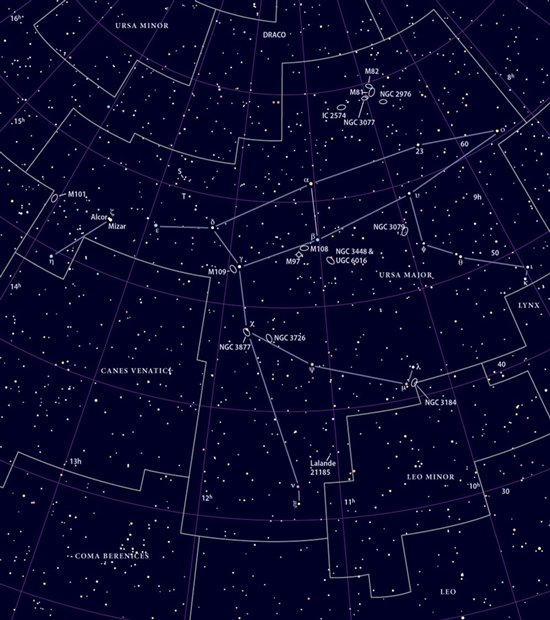 I’m a constellation kind of guy. So in that spirit, I thought I’d chat about some of the star figures now up in the Northern Hemisphere’s spring sky. Did you know that you can find the three largest constellations all at the same time? That’s right. The top three of the sky’s 88 total constellations are visible in the early evening right now.
I’m a constellation kind of guy. So in that spirit, I thought I’d chat about some of the star figures now up in the Northern Hemisphere’s spring sky. Did you know that you can find the three largest constellations all at the same time? That’s right. The top three of the sky’s 88 total constellations are visible in the early evening right now.
In order of size, they are Hydra the Water Snake, Virgo the Maiden, and Ursa Major the Great Bear. The latter contains the sky’s best-known asterism — the Big Dipper. An asterism is a recognizable group of stars that’s not one of the 88 “official” constellations.
If you’re just beginning to learn the stars of the night sky, use the Big Dipper to help you locate the two constellations that outrank Ursa Major in size, but, be warned, neither is bright. If you poke a hole in the Dipper’s bowl and let all the water run out, the water will fall on the back of Leo the Lion. Leo’s most prominent feature is a backward question mark that represents the Lion’s head and mane.
Continue to let the water run past Leo nearly as far as it has already, and you’ll arrive at Hydra. Well, part of Hydra. This immense constellation is the “Mother Russia” of the heavens — it stretches across many, many time zones (which, when they’re in the sky, astronomers call hours of right ascension). You’ll need a good star chart and a clear, dark site to map out the Water Snake’s rambling path.
What about Virgo? Find the Big Dipper again. Notice that its handle is curved. If you follow that curve away from the Dipper, you’ll run into two bright stars: first, orange Arcturus and then, blue-white Spica. For now, ignore Arcturus. Spica is your goal, and it’s the numero uno luminary in Virgo.
Spica lies in that constellation’s southern region. Most of Virgo lies to the upper right and upper left of this star sapphire. Again, a star chart will help.
As for sizes, I won’t bore you with a recitation of how many square degrees each constellation covers. But everyone understands percentages: Hydra covers 3.16 percent of the sky, Virgo envelops 3.14 percent, and Ursa Major covers 3.10 percent. Combined, that’s quite a bit of real estate!
While these three constellations may be huge, none are brilliant. In terms of overall brightness, Hydra ranks 71st, and Virgo 79th. Ursa Major — even with the Big Dipper — is only the 69th-brightest star pattern. The latter group does contain 10 of the 200 brightest stars, but none makes the top 30.
Finally, in terms of visible stars, Hydra, Virgo, and Ursa Major contain 71, 58, and 71 stars, respectively, that normal people could spot from a dark observing site.
So head out early on an April evening and identify these three celestial mammoths. When you do, you’ll know the stars that cover more than half of the area in the whole northern spring sky.